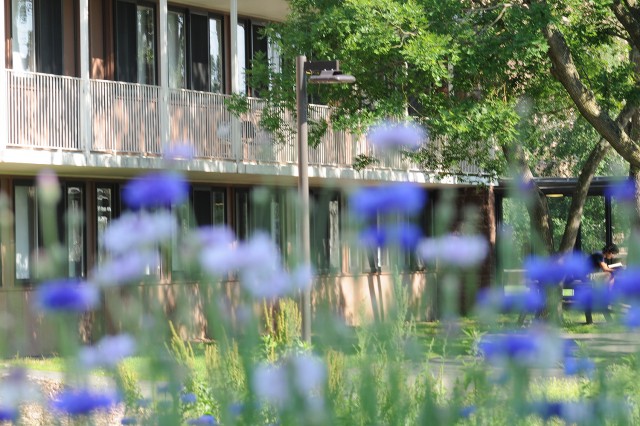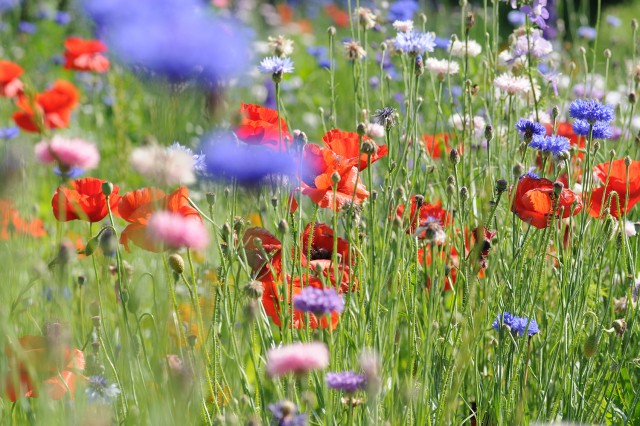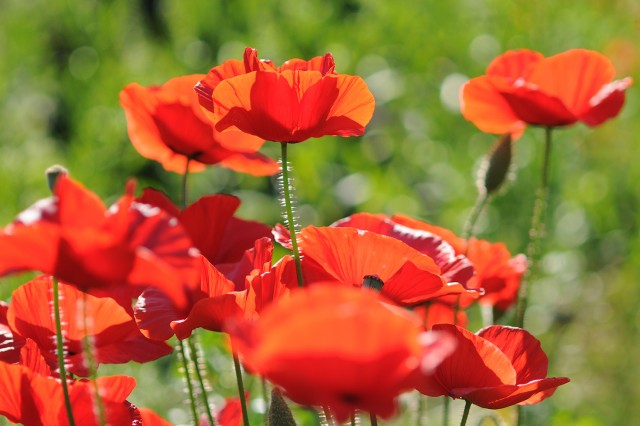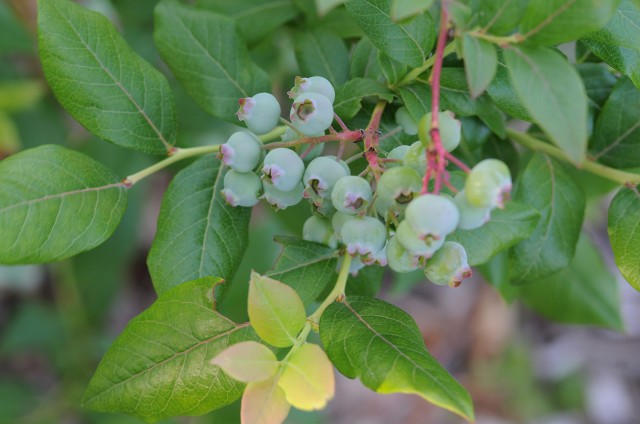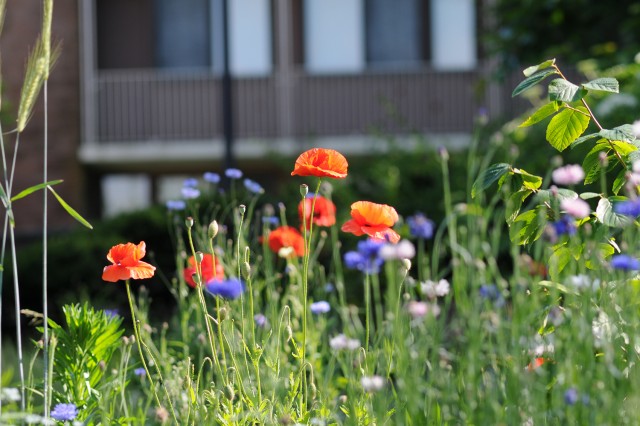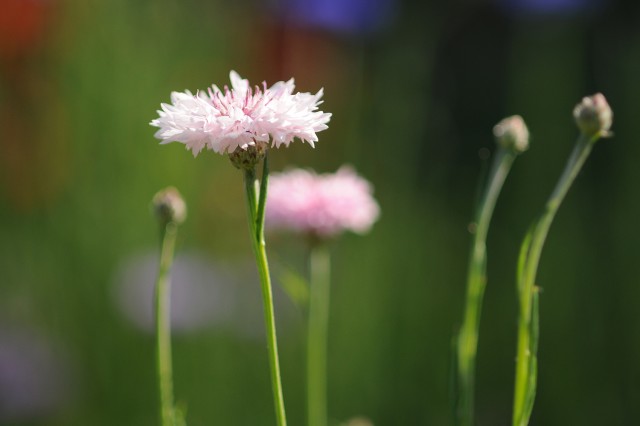WILD Wes’s West College Courtyard Blooms to Life
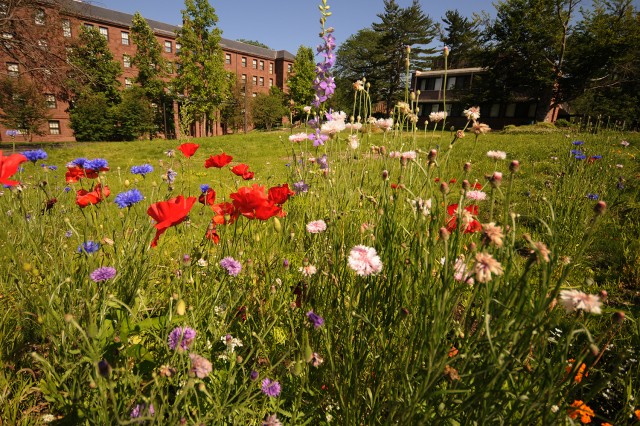
Behind Wesleyan’s historic College Row is a picture of New England college charm. But in the green expanses of lawn, where most see tradition and classic beauty, a group of Wesleyan students saw an environmental affront.
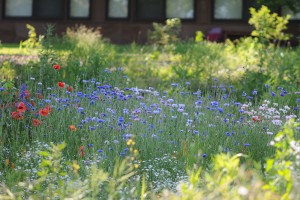
For the past three years, a student group known as WILD Wes (Working for Intelligent Landscape Design), has attempted an alternative approach to landscaping. With Wesleyan’s support, WILD Wes has embarked on a bold experiment: ditch the lawn near the West College Courtyard and replace it with a sustainable landscape, based on the principles of permaculture.
Permaculture design is meant to mimic natural patterns, such that the systems thrive permanently on their own, with low human maintenance. Wesleyan Head of Grounds Dave Hall believes the site has the potential to reach this level. “I’m hoping that it becomes labor-neutral,” he says. “There’s the possibility of some handwork, but no machinery.”
The courtyard is a challenging site. Years of erosion have swept away the topsoil, leaving the ground rocky and compact. Several large beech trees had to be removed due to an epidemic of beech bark disease, essentially leaving the area devoid of any plant life other than the ailing lawn.
For two years, students worked tirelessly on clearing, grooming, composting, mulching, trenching, and planting perennials, fruit trees, herbs and ground cover on the 2/3 acre sloping plot of land near the university’s student resident halls. But this summer, the unsightly dirt-heap has bloomed to life and the campus community is seeing the project bloom to fruition.
This month, red poppies, blue bachelor buttons, swamp milkweed, almost-ripe blueberry bushes and clover dot the landscape. On a woodchip path, courtyard visitors can stroll past the meadow/wildflower garden, a “forest mimic” area, fruit trees, and even into a rain garden — a haven for butterflies and bees. The site also has a “social space,” where the current WILD Wes members aspire to build a stage or performance area.
Nothing in the garden goes to waste. In 2012, WILD Wes students constructed their own “compost throne” out of repurposed wooden pallets. They also haul invasive weeds and other spent greens to the university’s composting site off campus, where material is broken down in several earth bins.
For Wesleyan 2011 alumnus Miles Bukiet, co-founder of WILD Wes, “It’s a victory for permaculture and it’s a victory for Wesleyan. What this project represents is a coming of age of the permaculture movement.”
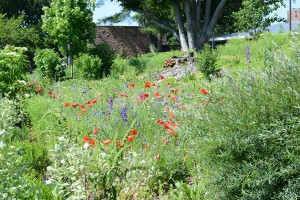
The concepts of permaculture originated when farmers at the turn of the 20th century espoused the value of “permanent agriculture” to save the land from the industrial forest-field-plow-desert pattern that produced quick results but left land barren. The movement picked up in the 1970s, and acquired a cultural dimension with alternative commune-style living, “eco-villages,” and private residents experimenting in their own backyards. Now, permaculture has entered the mainstream, and WILD Wes has a hand in this new stage of the movement.
Their determination was on display in December 2011, when WILD Wes held its first annual Design Charrette, a symposium that brought together professional permaculture designers, faculty and staff from Wesleyan, and students from the University of Massachusetts-Amherst to brainstorm ideas for sustainable landscaping on campus. The next semester, spring 2011, Bukiet and WILD Wes co-founder Sam Silver ’11 taught a student forum, the Sustainable Landscape Design Studio, in which they developed practical plans for WestCo. They also won a $50,000 grant from the Green Fund, Wesleyan’s student-run resource for environmental initiatives on campus.
Now that the West College Courtyard is blooming and self-sustaining, WILD Wes is moving on to a new project – overhauling a sloping hill near the Summerfields Dining Hall. The organization, currently led by Tennessee Mowrey ’14, Rina Kremer ’15, Nathaniel Elmer ’14 and Roxanne Capron ’14, is working on the project this summer. They’ll replace a trampled path with stairs and planted terraces that following the principles of permaculture. The diverse terrace gardens will prevent soil erosion and attract helpful insects while yielding herbs, berries and vegetables.
Bill Nelligan, director of sustainability, has confidence in WILD Wes’ projects. “It’s a great sustainable model. We’ll continue to creating landscapes across campus that are not only self-sufficient and native but will provide an edible landscape as well.”
Below are photos of the courtyard on June 20. To view last summer’s courtyard photos see this link. To watch a video on WILD Wes see this link. (Yael Chanoff ’11 contributed to this story)
